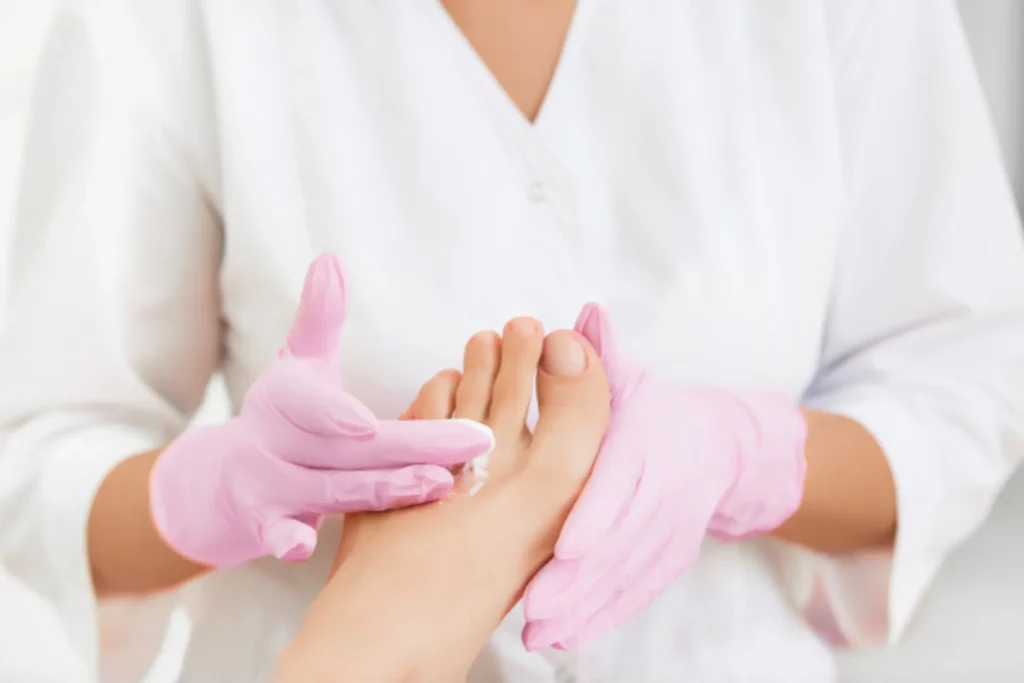Your foot’s health is essential to your overall health. Healthy feet are happy feet, and keeping your feet healthy is the best way to ensure that you avoid unnecessary health problems and conditions. However, there are many popular foot care myths which lead people down the wrong path when it comes to caring for their feet. The following are some of the most common myths people hear about their overall foot health.
Myth: Barefoot is better
This myth promotes the idea that walking barefoot is better for your feet than walking in shoes. In reality, walking barefoot increases the chance of cuts, abrasions and fungal infections either of the nail or in the form of athletes foot. It is especially dangerous for people with diabetes, who are more susceptible to severe infections from cuts on their feet.
Walking barefoot also does not provide your feet with proper support, which can lead to gait issues and pain as you age. This doesn’t mean you need to wear shoes all the time, but you should be wearing shoes when you’re walking outside.
Myth: There’s nothing that can be done for broken toes
No one knows where this myth got started, but it has led many people to avoid seeking treatment for a broken toe. The truth is, there are plenty of things healthcare professionals and podiatrists can do for your broken toe. Going to a professional after breaking your toe is essential to reduce improper healing, which can cause arthritis, pain and other problems down the line.
Myth: If you can walk, nothing is broken
According to this myth, if you can walk on your foot, then no bones can be broken. However, there is no truth to this myth. You can have a fracture in your foot, even if you are able to put weight on it and walk around. The best rule of thumb is to stay off your feet until you can have them assessed by a professional.
Myth: Foot pain is normal
Unless you have underlying conditions that cause pain when you walk, you should not be experiencing pain simply by walking around. This myth is usually aimed at older adults and the elderly, who think that being old means being in pain. But most foot pain is preventable. If you are feeling pain when you walk, seek the advice of a professional physician.
Myth: You should shave off your calluses or corns at home
Unfortunately, this myth is supported by a massive industry selling at-home callous and corn treatments, including shavers, acid peels and everything in between. There is nothing wrong with using a pumice stone to occasionally scrape at the dry skin on your feet. But when it comes to actual calluses, you should not shave them off with razors or similar devices. Always go to a professional if you need a callus shaved. The risk of infection is very high with this type of treatment when it is not done professionally.
Myth: Shoes cause bunions on your feet
While shoes can exacerbate the pain experienced by people with bunions, shoes do not directly cause the bunions themselves. Bunions are a physical deformity and not something that can be caused by wearing the wrong kind of footwear. The wrong pair of shoes, for example, those that squeeze together your toes, could make it more likely that a bunion will form; this is especially true if you already have a genetic predisposition (usually due to foot shape or gait) to bunions. Wearing proper shoes will reduce the pain experienced by people suffering from bunions.
Myth: Warts can be treated with duct tape
There are all sorts of wives’ tales surrounding warts. One of the most popular is that putting duct tape on your warts will essentially suffocate the wart and kill it. Duct tape is not considered an effective treatment for warts, and should not be used. Always use the treatments recommended by a podiatrist.
Myth: You will get athlete’s foot if you have dirty feet
Athletes foot has nothing to do with how clean or dirty your feet are. Athletes foot is a fungal infection, and it can be picked up by someone regardless of how often they wash their feet–though you should, of course, wash your feet regularly. Just remember that doing so is not an effective preventative for athlete’s foot; you’ll need to take other precautions, such as wearing shoes in locker rooms and pools, in order to reduce your chances of getting it.
*This blog contains general information about medical conditions and is not advice. You must not rely upon the information in this blog as medical advice. Medical advice should always be sought from an appropriately qualified podiatrist such as ourselves.
